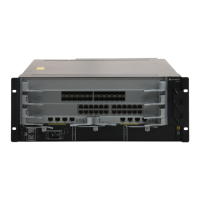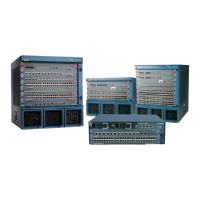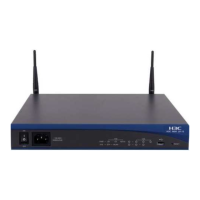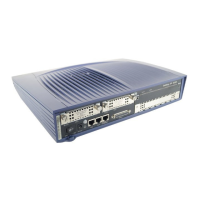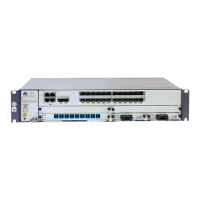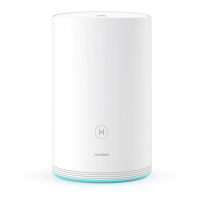Operation Manual - Routing Protocol
Quidway S3500 Series Ethernet Switches Chapter 4 OSPF Configuration
Huawei Technologies Proprietary
4-3
4.1.4 Basic Concepts Related to OSPF
I. Router ID
To run OSPF, a router must have a router ID. If no ID is configured, the system will
automatically select an IP address from the IP addresses of the current interface as the
Router ID. Way to choose a router ID: if the LoopBack interface address exists, the
system chooses the LoopBack address with the greatest IP address value as the router
ID; if no LoopBack interface configured, then the address of the physical interface with
the greatest IP address value will be the router ID.
II. DR and BDR
z Designated Router (DR)
In multi-access networks, if any two routers establish adjacencies, the same LSA will be
transmitted repeatedly, wasting bandwidth resources. To solve this problem, the OSPF
protocol regulates that a DR must be elected in a multi-access network and only the DR
(and the BDR) can establish adjacencies with other routers in this network. Two
non-DR routers or non-BDR routers cannot establish adjacencies and exchange
routing information.
Which router can be the DR in its segment is not manually specified. Instead, DR is
elected by all the routers in the segment.
z Backup Designated Router (BDR)
If the DR fails for some faults, a new DR must be elected and synchronized with the
other routers on the segment. This process will take a relatively long time, during which,
the route calculation is incorrect. To shorten the process, BDR is brought forth in OSPF.
In fact, BDR is a backup for DR. DR and BDR are elected in the meantime. The
adjacencies are also established between the BDR and all the routers on the segment,
and routing information is also exchanged between them. After the existing DR fails,
the BDR will become a DR immediately.
III. Area
The network size grows increasingly larger. If all the routers on a huge network are
running OSPF, the large number of routers will result in an enormous LSDB, which will
consume an enormous storage space, complicate the SPF algorithm, and add the CPU
load as well. Furthermore, as a network grows larger, the topology becomes more likely
to take changes. Hence, the network will always in “turbulence”, and a great deal of
OSPF packets will be generated and transmitted in the network. This will lower the
network bandwidth utility. In addition, each change will cause all the routes on the
network to recompute the route.
OSPF solves the above problem by partition an AS into different areas. Areas logically
group the routers. The borders of areas are formed by routers. Thus, some routers may
belong to different areas. A router connects the backbone area and a non-backbone

